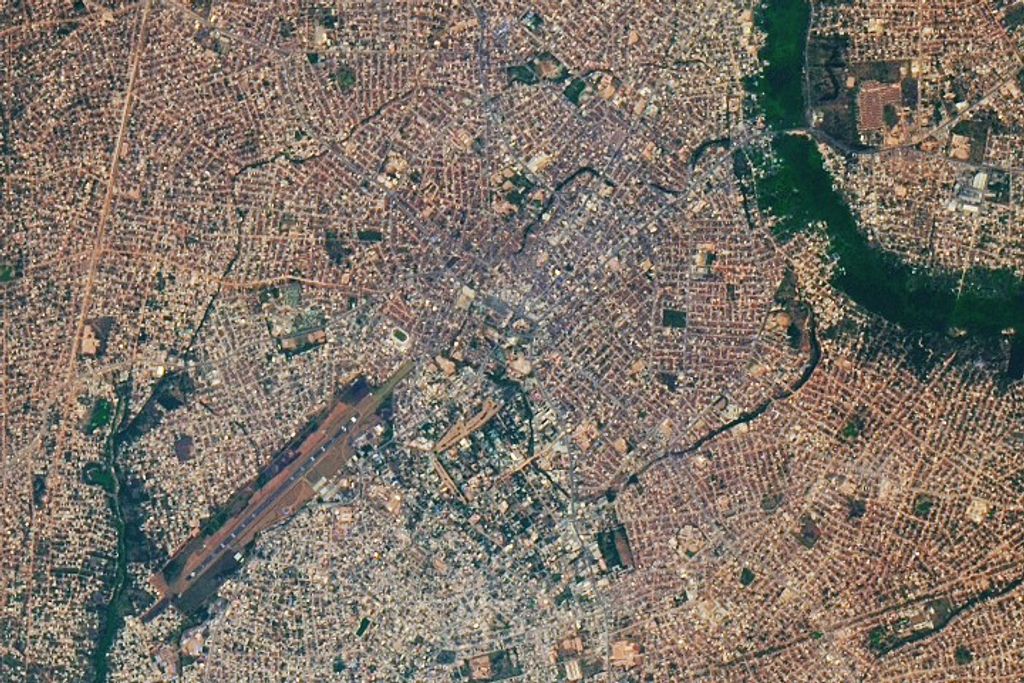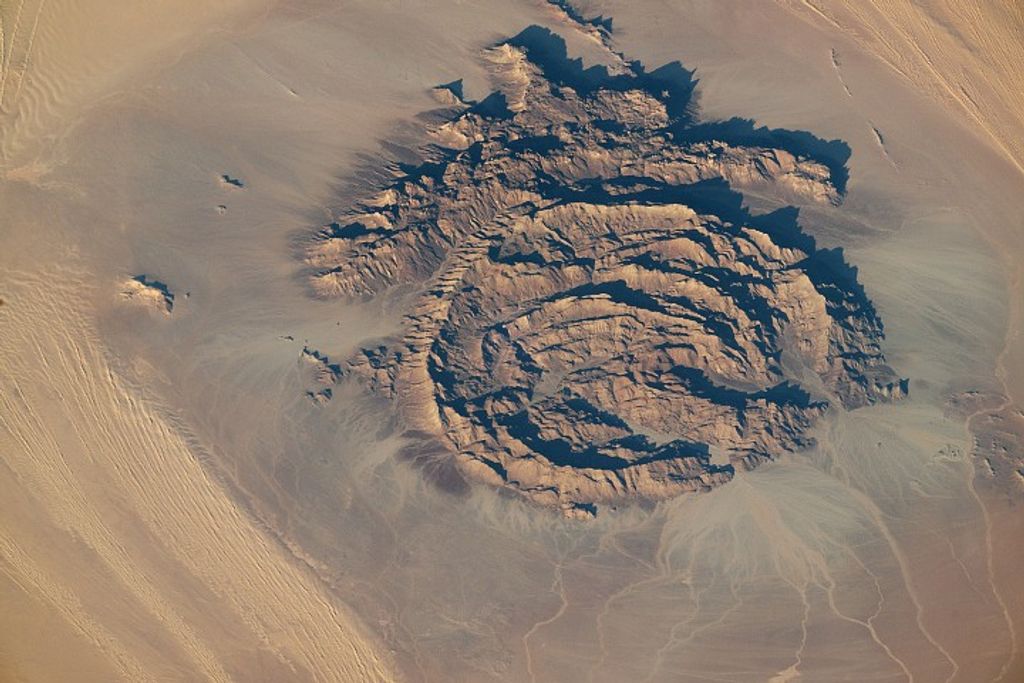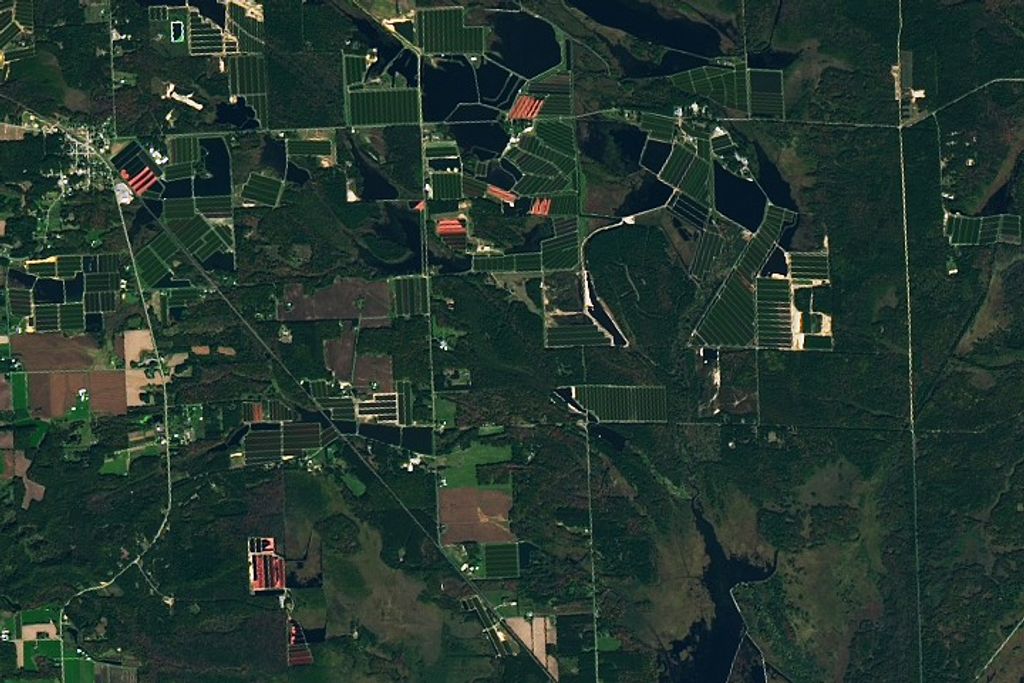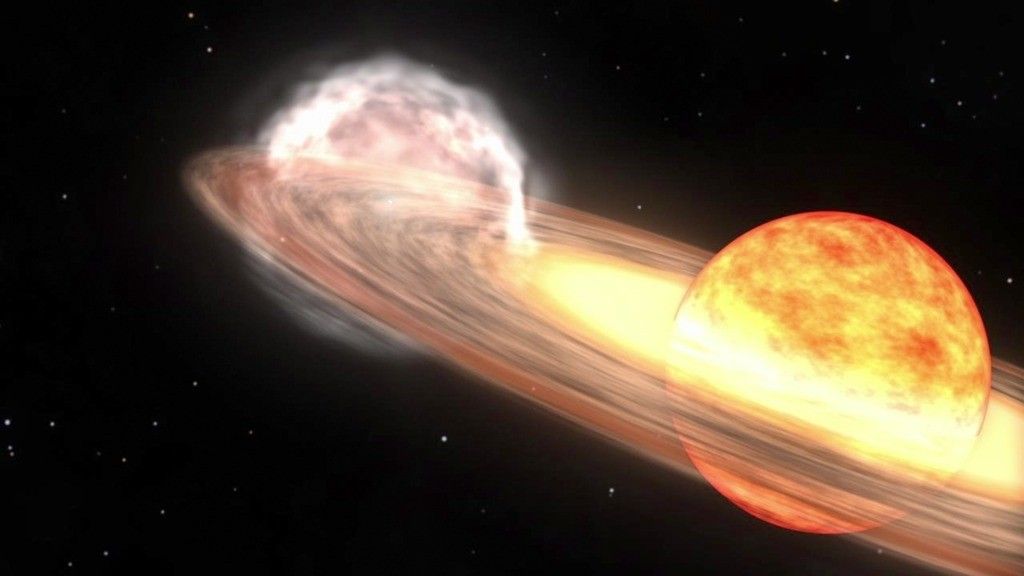Stars — they shimmer in the night sky, burning hot across the cosmos. But sometimes … they erupt. Enter: novae.
In short, a nova is an outburst in a binary system, or system with two stars that closely orbit one another.
In all known novae, one of the stars in the system is a white dwarf, which is the leftover core of a star like our Sun after it runs out of fuel. Its companion will typically be either a main sequence star, a classification that includes 90% of known stars, or a large star like a red giant approaching the end of its life.
In most systems that create novae, the white dwarf and its companion star orbit so closely that the white dwarf’s gravity pulls material from the companion. This material swirls around the white dwarf and forms an accretion disk. Throughout this process, the white dwarf's gravity will pull the material toward itself, depositing it onto its own surface, which while fluid in consistency is extremely hot and dense.
The material pulled from the atmosphere of the companion star is primarily hydrogen. Over time, that material builds up on the surface of the white dwarf. As hydrogen accumulates, it is heated by the white dwarf, and that heat builds until it eventually triggers a fusion reaction. In other words, the gas is explosively ejected from the surface of the white dwarf.
Novae are, on average, around 200,000 times as bright as the Sun, while the brightest novae can be 10 times brighter than that. Novae can even be bright enough to be seen with the unaided eye from Earth, even if the star system wasn’t visible prior to the outburst. Novae can last for days, weeks, or even months.
Different Types of Novae
There is variety among novae, as they can take place with different types of companion stars and can last for different amounts of time and with varying levels of brightness. However, there are two main types: classical and recurrent. Both are eruptions that take place on the surface of stars, but there are a few main differences.
Classical novae erupt only once within a human lifetime. These novae will likely erupt again, but it can take thousands or even millions of years for enough material to build up on the star's surface to trigger an eruption.
Recurrent novae erupt, as the name suggests, more than once. A nova is recurrent if a system has at least two recorded outbursts. Scientists are not yet sure why some novae erupt more frequently, but it could be influenced by a number of factors including the type of companion star as well as how fast the white dwarf can accumulate material pulled from the companion star.
Novae vs. Supernovae
You may have heard of a supernova before, but this explosive phenomenon is different from a nova.
While there are multiple types, in general, a supernova is an explosive outburst that essentially destroys the star. When a nova occurs, a large outburst takes place, but the stars in the system aren’t destroyed.
In core collapse supernovae, a massive star collapses in on itself and creates a shock wave that produces a bright flash of light. In another class, called Type Ia, a white dwarf gains so much material from a companion that it exceeds the mass limit for white dwarfs, resulting in a massive thermonuclear explosion.
Novae always take place in binary systems. Supernovae can take place in binary systems or systems with singular stars.
Also, a supernova results in an explosion much brighter than a nova. While novae can be hundreds of thousands of times as bright as the Sun, a supernova can be billions of times as bright.
Humans and Novae
Because they are so bright, novae can be visible to the unaided eye. This means that humans most likely saw novae long before telescopes were invented. From Earth, novae don't look like explosions in the sky, but rather like stars suddenly appearing or getting brighter. After erupting, novae can be visible for days or even weeks.
In fact, one specific nova, called T Coronae Borealis, nicknamed "the blaze star," has been observed by humans for centuries. This recurrent nova explodes about once every 80 years. It last had an outburst in 1946 and is expected to erupt again sometime in the mid-2020s. Eager astronomers have been watching carefully since about the summer of 2024. The first possible observation of this phenomenon took place in 1217, when a man in Germany named Burchard reported seeing "a faint star that for a time shone with great light" in the night sky.
While humankind has looked up at the stars for as long as our species has existed, technology has vastly improved our ability to observe and understand novae. Scientists can use both space- and ground-based telescopes to not just identify novae, but study them in more detail.
By observing novae in different wavelengths — including radio, infrared, visible, ultraviolet, X-ray, and sometimes gamma-ray light — scientists can investigate different aspects of novae. Evolving techniques have allowed researchers to explore everything from the mechanisms behind these eruptions to their accretion disks and even the nature of the material accumulating in these outbursts.
By Chelsea Gohd
NASA's Jet Propulsion Laboratory

























